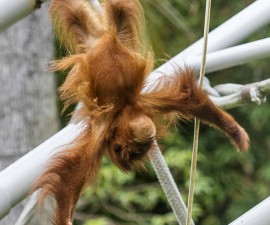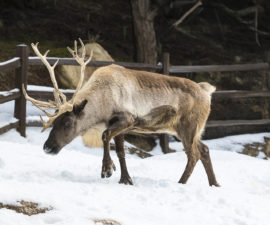Open and Close Door Gently.” This sign adorns an otherwise unassuming door in the McKinney Family Invertebrate Propagation Center (IPC) at the San Diego Zoo. Although the rest of the 4,000-square-foot space has multiple habitats housed together in a large management area, this entry leads to something special.
BY Paige Howorth
Photography by Ken Bohn
As you step through mosquito netting and into the studio-apartment-sized room, you see them. Webs. Lots of webs! And not the kind you brush out of corners with a broom, either. Made from one of the world’s strongest natural fibers, these two- to three-foot-diameter webs command your immediate attention—that is, until you see the architects. The golden silk orb weaver Nephila clavipes hangs out here, free ranging, in a cutting-edge facility designed with giant spiders in mind.
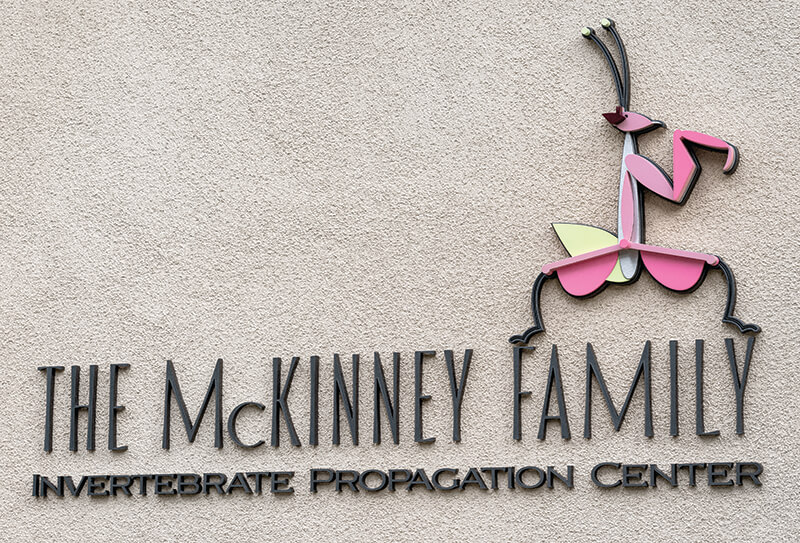
The “Spider Room” is one of many features of our new facility, which was developed as a place where best practices for invertebrate animal care and welfare are honed. These practices further inform the habitats we are creating for the two-story invertebrate experience in the new Denny Sanford Children’s Zoo, The McKinney Family Spineless Marvels, opening in 2021. With a two-year head start, we have made breakthroughs in how we can best present these incredibly important animals, while maximizing their opportunities to thrive.
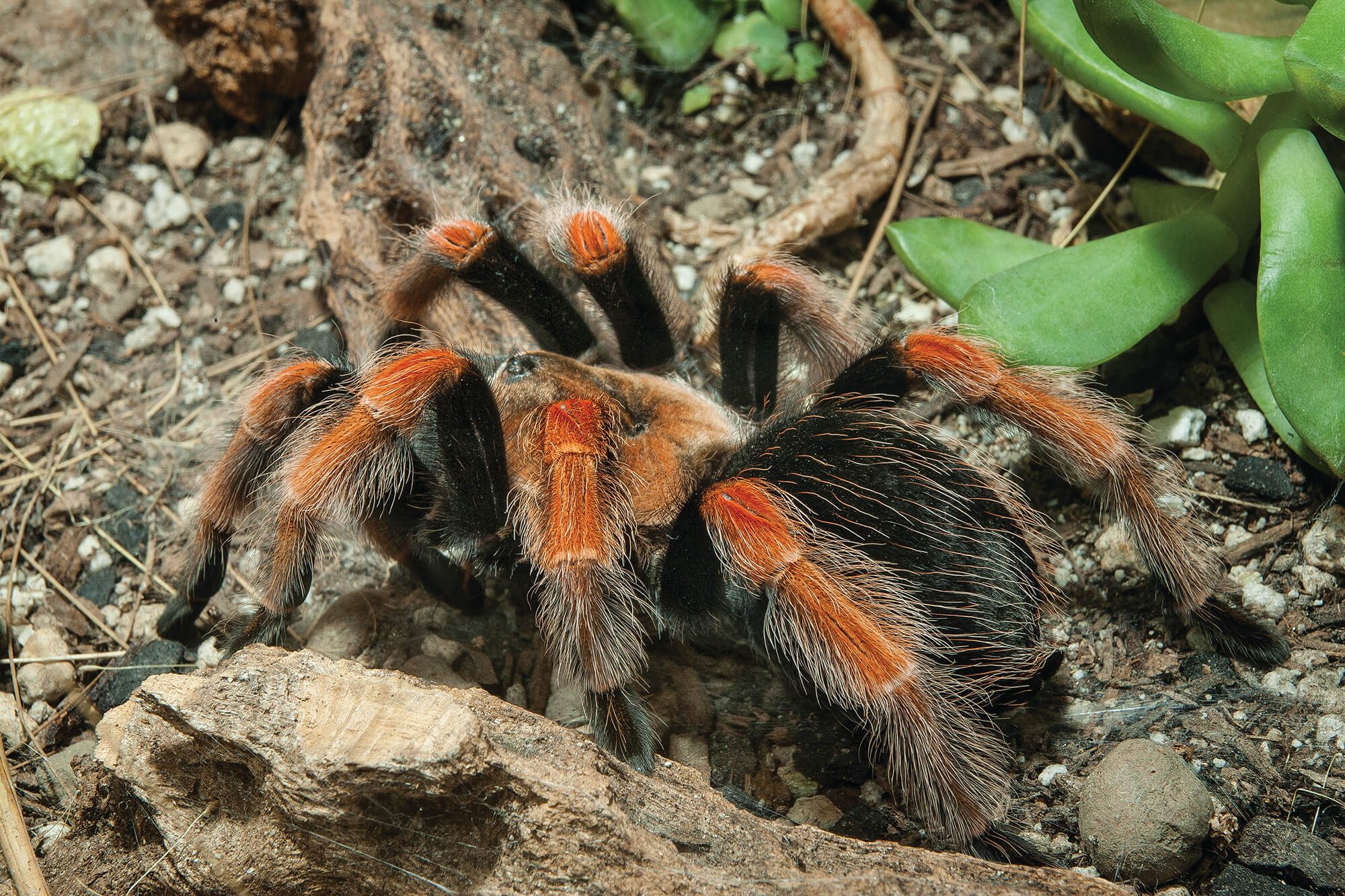
RESCUED
The flame-kneed tarantula is protected by international treaty from over-collection. This one was part of a large confiscation the Zoo provided sanctuary for in 2010.
A Gathering of Giants
Take the goliath stick insect Eurycnema goliath. Found in tropical south Queensland, Australia, this impressive insect has been part of our entomological population since 2016, when I brought a group of their eggs back from our partners at Melbourne Zoo. With nine-inch-long females resplendent with striped green bodies and bright pink hindwings, they bring covert glamour to the camouflage that keeps them safe from predators.
Although they do most of their feeding and other activities at night, during the day, we often find these huge insects clustered under the light of one of dozens of UV-transmissible skylights (a notable feature of the IPC facility). The benefits of ultraviolet light and thermoregulation are well studied in several animal groups, and proper UV exposure regulates many biological processes and behaviors. While far less comprehensively studied in invertebrates, adequate UV provision and natural photoperiods were important to include in our management area, since it is a baseline input for many terrestrial arthropod species.
Choice and control are hallmarks of quality animal care, and invertebrates are no exception. When we see the goliath stick insects choosing to aggregate in the sunlight in the IPC, it could be a sign that they know something that we don’t—at least not yet. Ultraviolet light absorption is important for some insects, and basking for thermoregulation is critical for many others. It may similarly assist these stick insects in effective regulation of their biological processes, including egg development. That’s a good thing—the San Diego Zoo is one of only two US institutions to manage this impressive species long term.
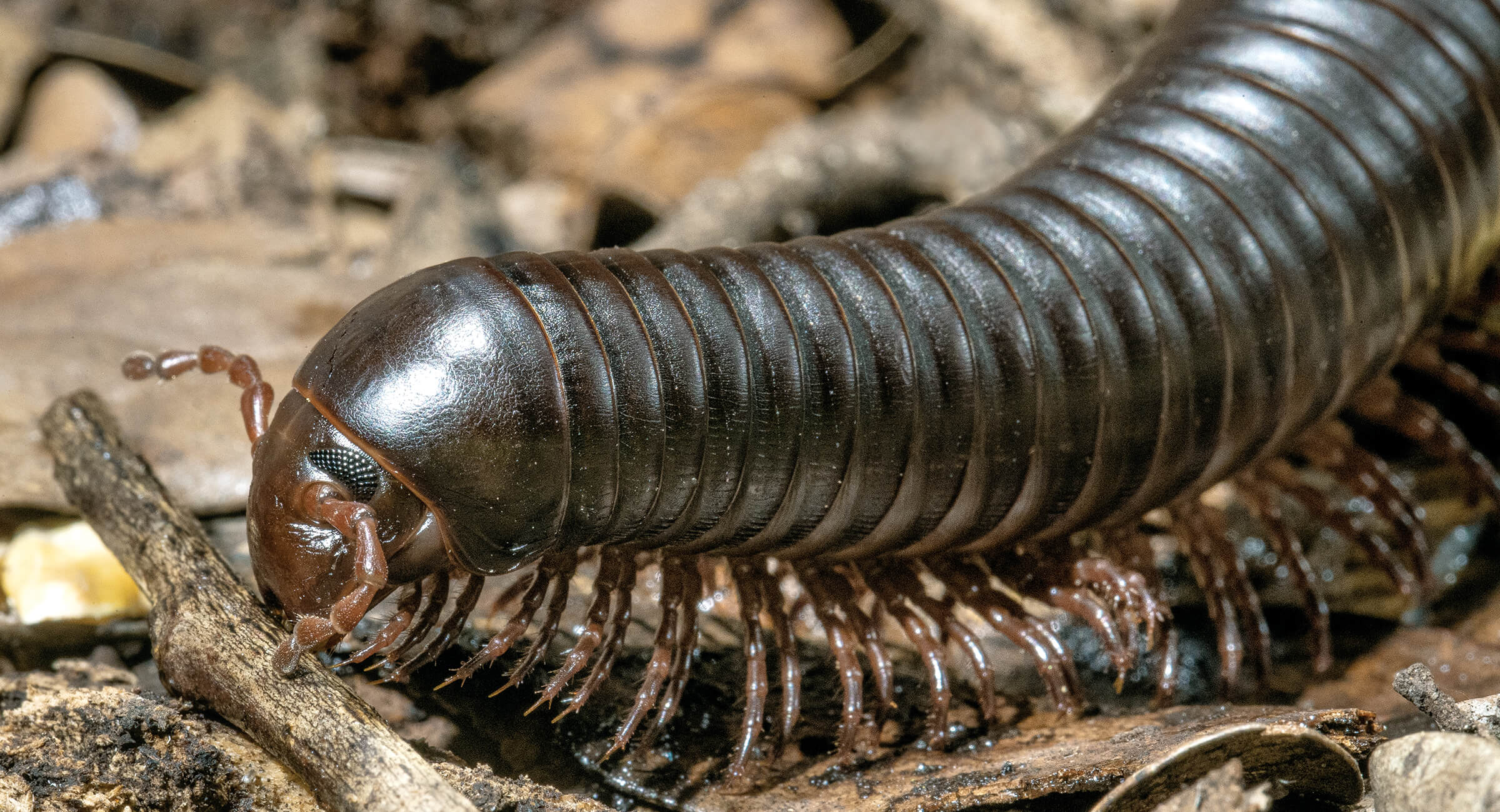
 The number of years the Zoo has been an invertebrate rescue facility; we’ve taken in about 100 animals in that time.
The number of years the Zoo has been an invertebrate rescue facility; we’ve taken in about 100 animals in that time.
I’ll Have One of Everything
Unlike the goliaths, who feed exclusively on a few species of plants, many invertebrates take a broader approach. It can be easy to underestimate just how broad when working with animals that lack significant research on the relationship between diet and welfare. Like most mysteries, each discovery is a bridge to the next.
Recently, we have discovered just-hatched millipedes after a years-long successful effort to sustainably rear the impressive giant African millipede Archispirostreptus gigas. This species can grow to lengths of up to 12 inches and live for several years. Yet, creating sustainable populations has long been a challenge. Luckily, our invertebrate care specialists have the skill set to crack the code, and a facility to offer the best support possible.
These millipedes—which, incidentally, also show up for the occasional sunbath—are important mechanical decomposers in their tropical East African ecosystems, consuming a variety of plant and animal matter. Their role in breaking down this organic matter further exposes it to microbial and fungal action, resulting in rich soil to support plant life. At the IPC, we provide organic produce and decaying wood and leaves, which we supplement with calcium and chitin, the polysaccharide building block found in insect exoskeletons.
Based on the success of this diet in raising the first generation of millipedes (now breeding adults), we have stretched the possibilities further. In their native habitat, millipedes have been observed in association with decomposing mammal carcasses. Our goal in the IPC is to align with natural presentations and foraging opportunities as much as possible, so we’ve begun offering periodic carnivorous items like thawed, small mice, which they consume in short order.
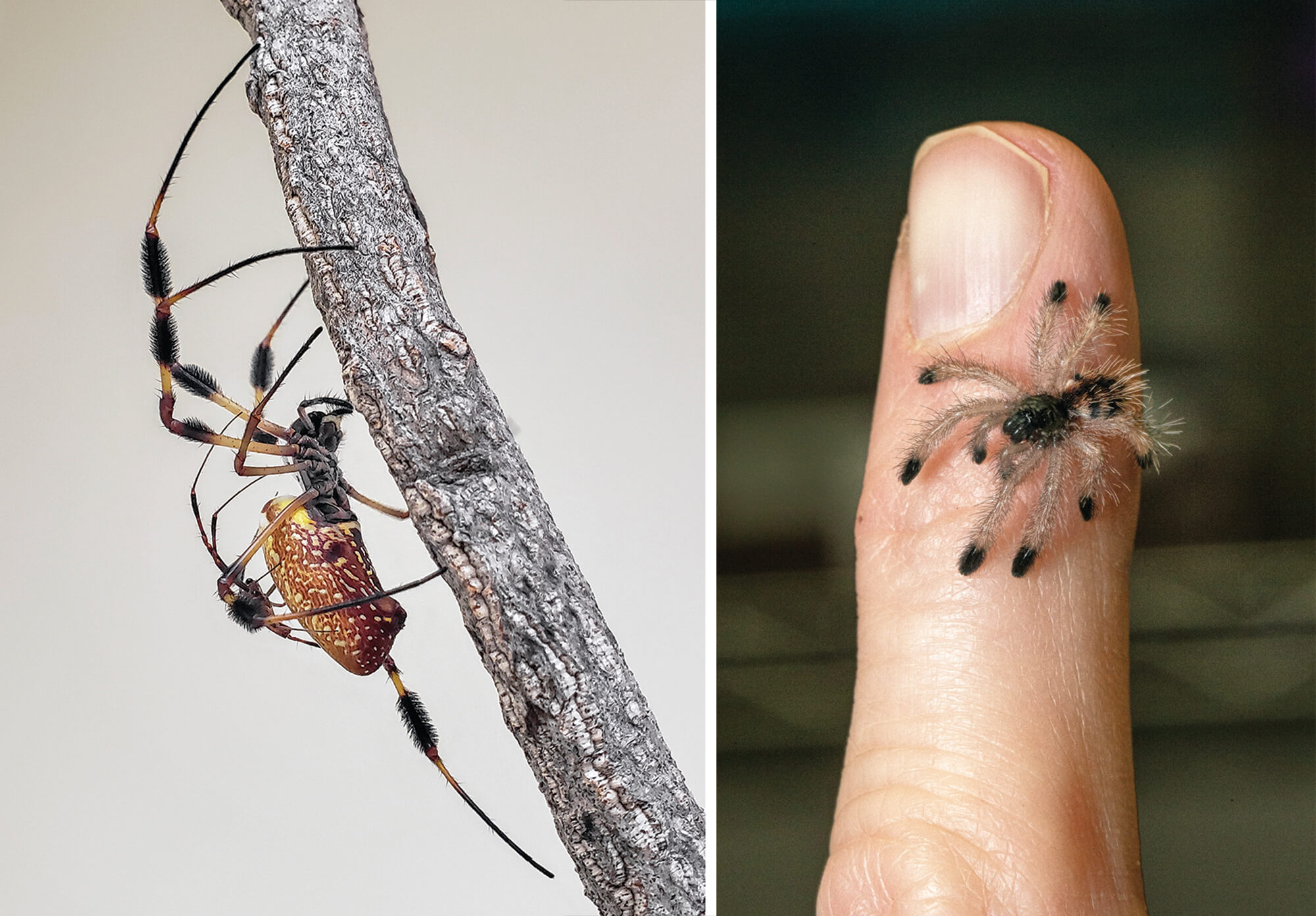
HITCHING A RIDE
(Left) An adult male golden orb weaver gets a ride on an adult female. Females are much larger than males. (Right) Pink-toed tarantulas Avicularia avicularia have black toes when they hatch.
 Number of butterfly species we’re helping save at our Butterfly Conservation Lab: Quino checkerspot, western monarch, and Laguna Mountains skipper.
Number of butterfly species we’re helping save at our Butterfly Conservation Lab: Quino checkerspot, western monarch, and Laguna Mountains skipper.
Are you still thinking about the Spider Room?
I thought so! Here’s how it works. In the tropical ecosystems where orb weavers in the genus Nephila are found, they make webs across trees, within the undergrowth, and even between power lines. Sometimes, many immature spiders live semi-communally in a section of suitable habitat; other times they find a perfect solitary spot of their own. I once bounced back from a huge web that was strung across a foot bridge in Maroansetra, Madagascar—the spider was not in the web at the time, and I just walked right into it, clueless. And I am not kidding about the bounce. The webs are incredibly strong! The silk, with a toughness rating greater than that of steel or Kevlar, has, in the past, been used in fishing nets, scope crosshairs, pantyhose, and more.
In the IPC’s Spider Room, each adult spider is given access to a large, three-foot-wide hexagon or other geometric-shaped wire frame to start. The frame materials have varied—including metal, jute rope, and twigs—as we have experimented with the best options for the spiders. We landed on textured black steel frames, and suspended them from the ceiling with fishing line. We also provided a stick “forest” for the younger spiders to grow up on, and this matrix offers choice to the adults as well.
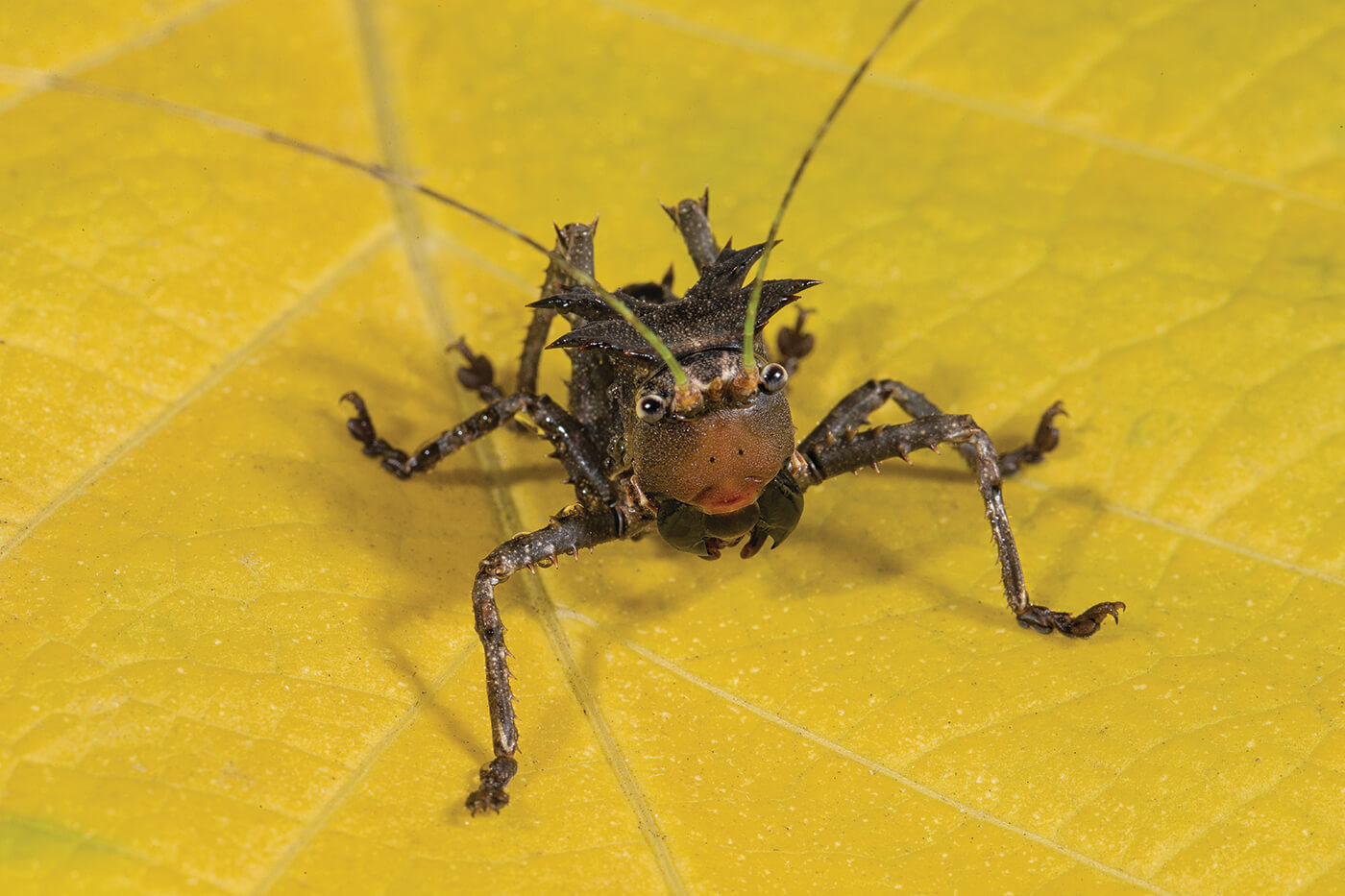
HERE THERE BE DRAGONS
Even at the nymph stage, the dragon-headed katydid Lesina intermedia is fierce looking.
This predator is definitely not one for sudden moves that don’t involve prey. They expend so much energy constructing their large webs that they are considerably more interested in hanging out and waiting to reap the benefits of whatever might fly into their trap. The size and range of the habitat for the spiders is important, as sustainability in this species depends on multiple animals and diversity in age classes.
Within this space, fly pupae are scattered, and there are numerous fruit feeding outposts, so that the prey items can sustain themselves. Invertebrate care specialists also feed the individual spiders crickets, by tossing them directly into their webs, and we supplement with dead bees from our managed hives and other insect prey items, when available.
The result is a thriving group of spiders that are largely unmotivated to move outside their individual territories—as long as food is abundant. This “homebody” behavior will make their habitat in the new Children’s Zoo even more exciting to see, as it also features a free-ranging spider residence.
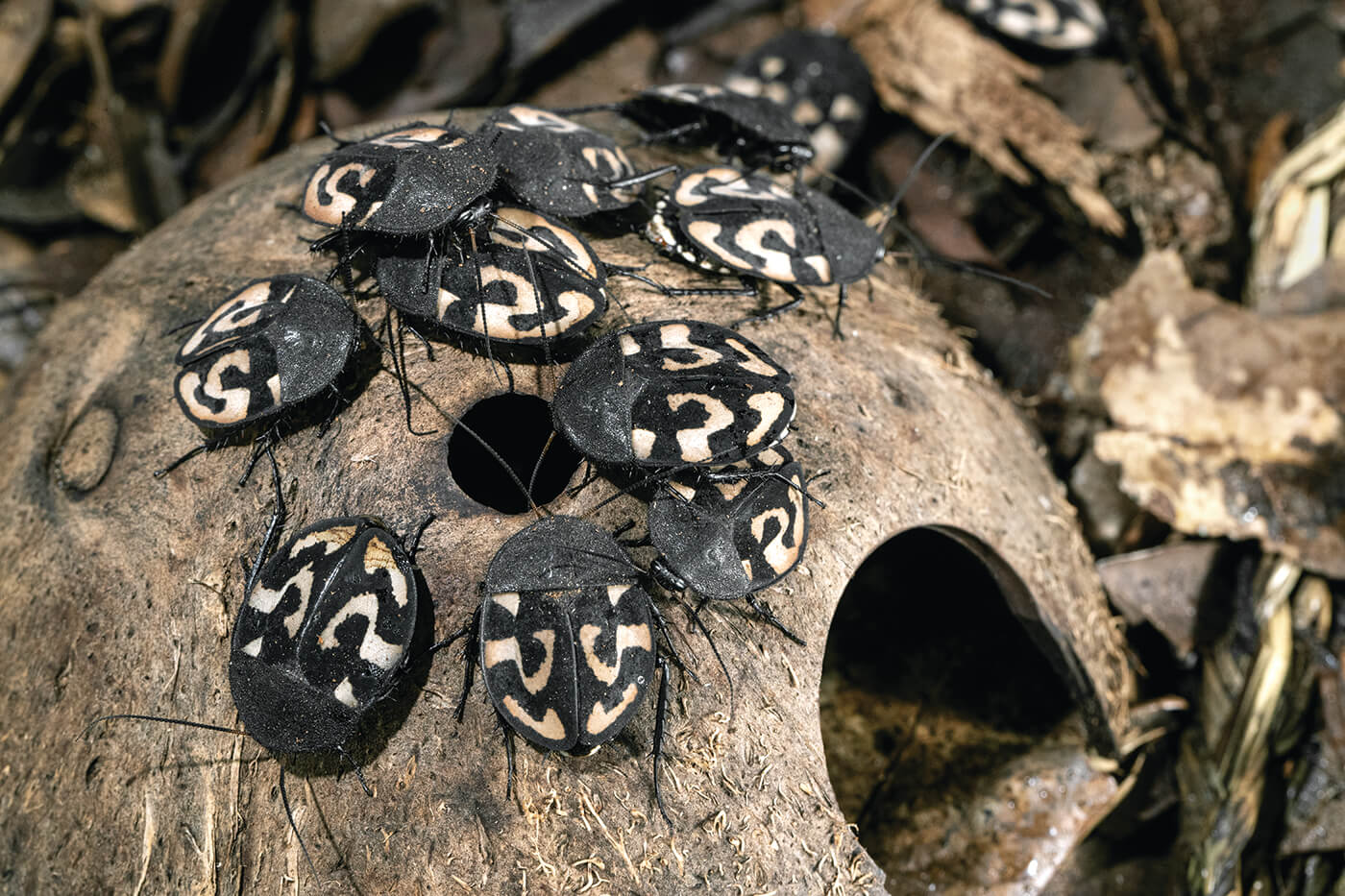
NO QUESTION ABOUT IT
Question mark roaches Therea olegrandjeani are a fascinating species we look forward to sharing with guests.
The Invertebrate Propagation Center—along with our Butterfly Conservation Lab—has elevated our organization’s commitment to invertebrates, and holds a promising future for saving species. An additional dedicated IPC quarantine room, completely isolated from the main area, will allow us to securely maintain endangered species such as the Lord Howe Island stick insect separately, while developing best practices for others that will be visible to the public. These include leafcutter ants, dragon-headed katydids, and question mark roaches, to name a few.
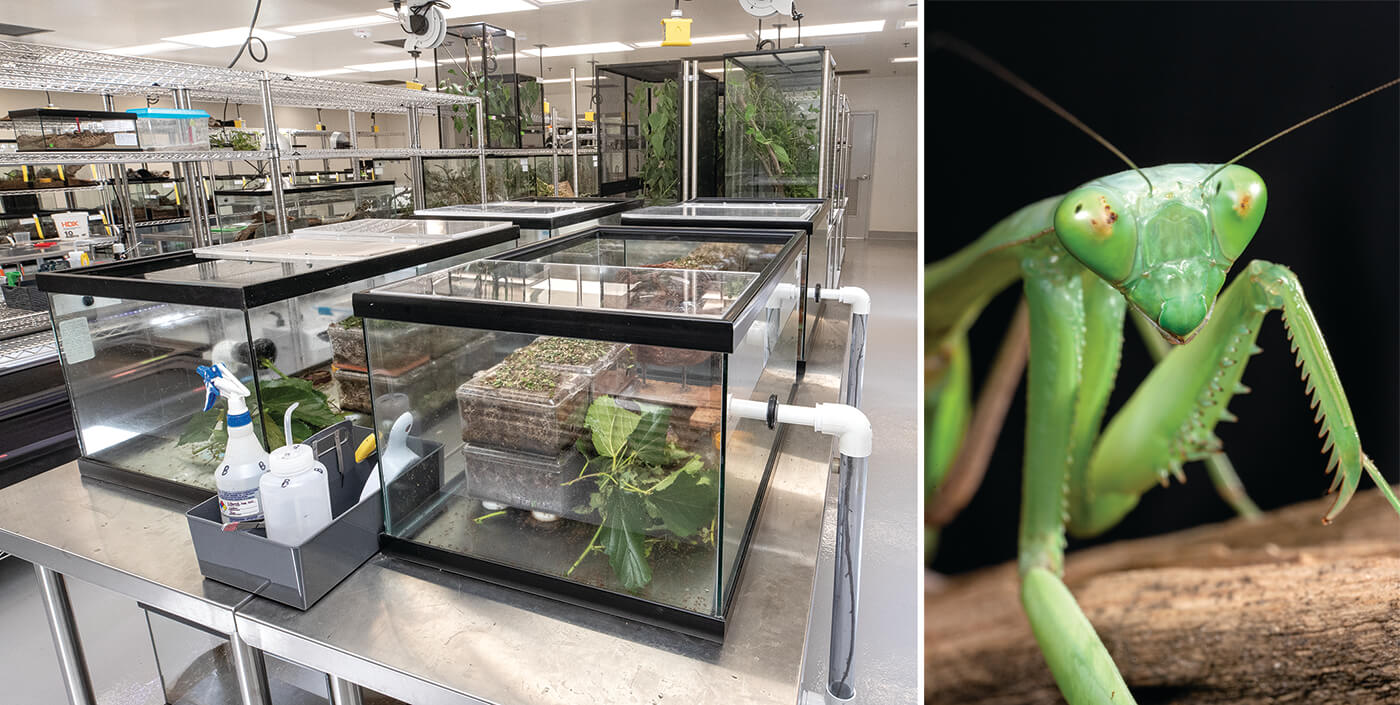
A LOOK INSIDE
(Left)Special housing for leafcutter ant colonies inside the IPC. (Right) Giant Asian mantis Hierodula membranacea .
Invertebrates comprise 99 percent of all animal biodiversity and are well represented at the Zoo, thanks to the incredible capacity of the McKinney Family Invertebrate Propagation Center and upcoming Spineless Marvels experience. At a time when the conservation of invertebrates could not be more important, we are stepping up to meet the challenges of optimal invertebrate welfare and public engagement—one web at a time!



